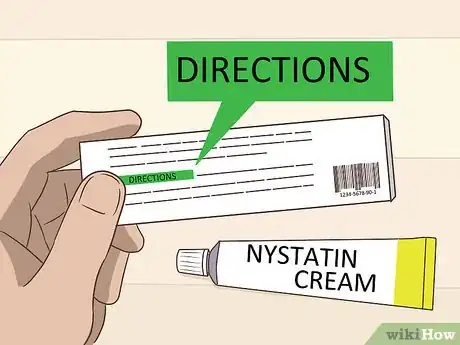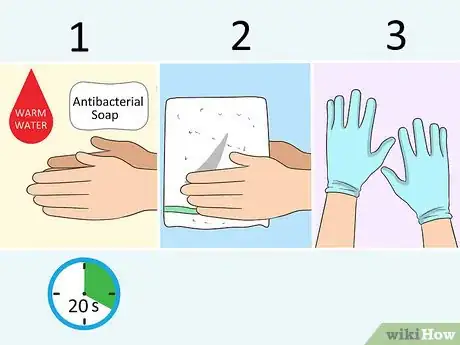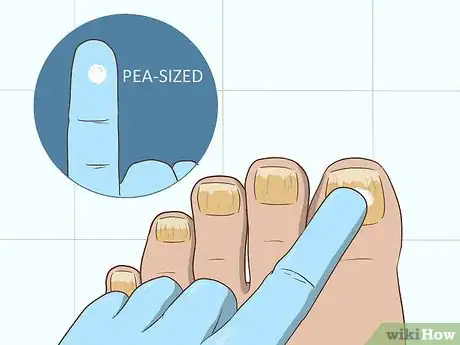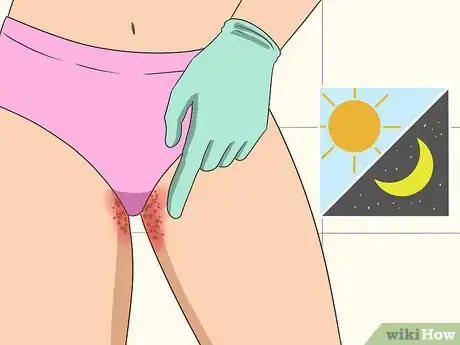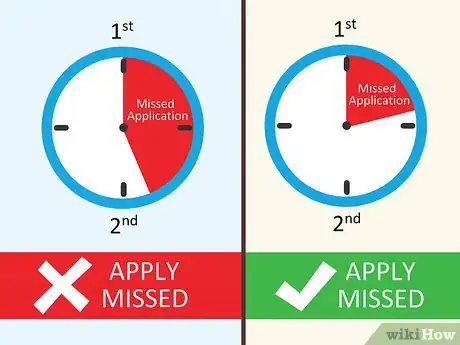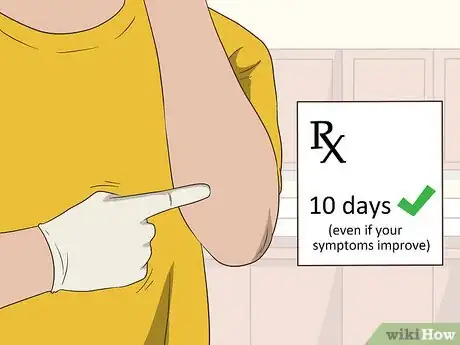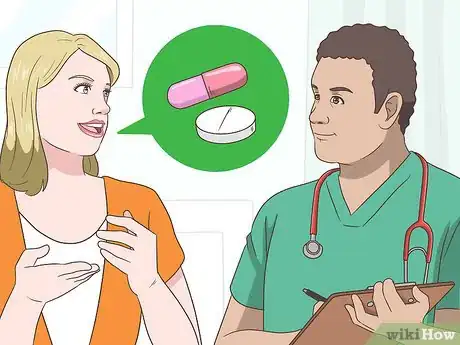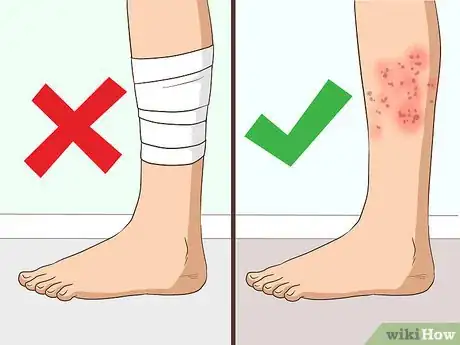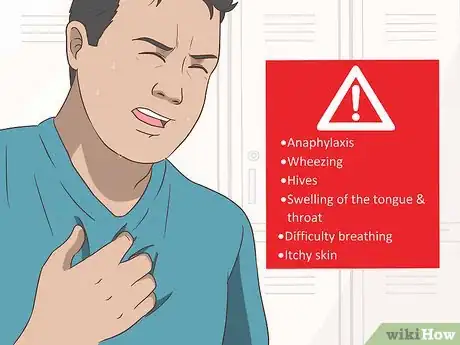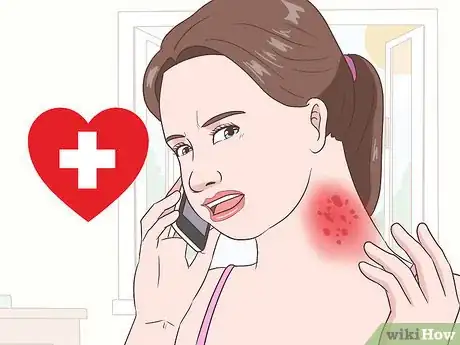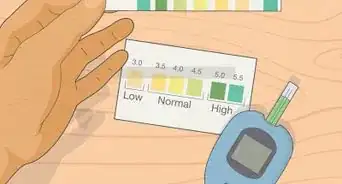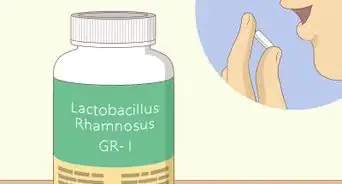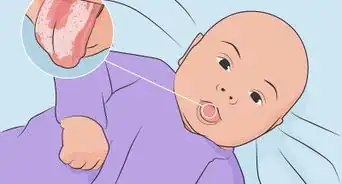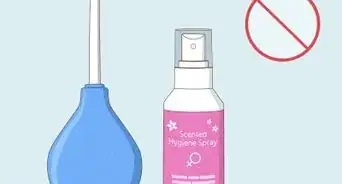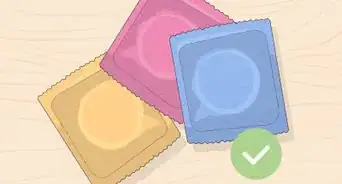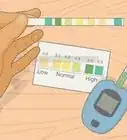X
This article was co-authored by Marsha Durkin, RN. Marsha Durkin is a Registered Nurse and Laboratory Information Specialist for Mercy Hospital and Medical Center in Illinois. She received her Associates Degree in Nursing from Olney Central College in 1987.
This article has been viewed 48,432 times.
Fungal infections can be itchy and uncomfortable. Thankfully, there’s an easy way to manage these pesky yeast-related infections. Nystatin is an over-the-counter medicated cream used to treat fungal infections of the skin. Nystatin can resolve most infections within a few days to a week. By applying Nystatin as directed and taking some basic precautions, you can restore your healthy skin.
Steps
Part 1
Part 1 of 2:
Applying Nystatin Cream
-
1Read the directions on the Nystatin package. Consult the dosage instructions to determine how frequently to apply Nystatin and for how long. You can also check with your doctor or pharmacist for this information.[1]
- Depending upon the severity of your infection and its location, application directions may vary.
- Follow your doctor’s specific instructions.
-
2Wash the affected area and dry it completely before applying Nystatin. Use lukewarm water and mild soap to wash the infected area where you’ll be applying your Nystatin. Blot the area dry gently with a clean towel.[2]
- For example, if the infection is on your foot, wash your foot thoroughly in the shower and dry it with a clean towel.
Advertisement -
3Wash your hands thoroughly and put on medical gloves. Wash your hands with antibacterial soap under warm running water for 20 seconds. Dry them on a clean towel. Then, put on a snug-fitting pair of disposable medical gloves. It is important to put on gloves when using Nystatin to treat a fungal infection. Fungal infections are very contagious and may spread easily.[3]
- You can purchase disposable medical gloves at your local drug store.
- Avoid wearing latex gloves if you have a latex allergy. However, this probably won’t be an issue since most disposable gloves are made of nitrile.
-
4Apply enough Nystatin to cover the affected area. Squeeze a pea-sized amount of Nystatin onto your clean (or gloved) fingertip. Rub it gently over the affected area so the cream is absorbed fully and disappears into the skin.[4]
- If a large area of your skin is infected, apply another pea-sized amount of Nystatin as necessary to cover it.
- It’s best to err on the side of applying Nystatin sparingly rather than leaving lots of excess cream that sits atop the skin.
-
5Wash your hands after applying the cream even if you wore gloves. Wash your hands thoroughly under warm running water with antibacterial hand soap for 20 seconds. Dry them on a clean towel.[5]
- If you are using Nystatin to treat your hands, wipe any excess cream off your fingertips with a clean piece of toilet paper while maintaining your therapeutic application.
- Take care not to rub your eyes with your fingers after application.
-
6Apply the cream 2 times a day—in the morning and at night. Apply your Nystatin twice a day about 12 hours apart. Applying it before breakfast and before bed can help you remember to use your medication in a timely way.[6]
- Set a reminder on your phone if you have trouble remembering to apply your medication.
-
7Apply any missed applications as soon as you remember. Skip doubling-up on applications if you forget to apply your Nystatin and it is almost time for your next “dose”. Otherwise, apply your Nystatin as soon as you realize you’ve forgotten it.[7]
-
8Keep using Nystatin for the full length of the prescription. Continue using your Nystatin as prescribed even if your symptoms improve. Stopping the medication too early may cause your fungal infection to return, even if it seems to have cleared up.[8]
- Nystatin is typically applied twice a day for 3-10 days. If your infection is severe, your doctor may prescribe it for a longer period of time.
Advertisement
Part 2
Part 2 of 2:
Taking Precautions with Nystatin
-
1Discuss any other medications or supplements with your doctor. Talk to your doctor about any medications or vitamins you are taking before starting your Nystatin prescription. If it’s helpful, bring a list of medications to your doctor’s appointment.[9]
- While there are few known drug interactions with Nystatin, your doctor can determine if the cream makes sense for you given the rest of your regimen.
-
2Avoid using any bandages or dressings on top of the Nystatin. Keep the site of the infection dry and well ventilated between Nystatin applications. Do not cover it with gauze or other bandages because fungal infections need to breathe. Covering them may seal in moisture and cause them to spread.[10]
-
3Don’t use Nystatin cream in your eyes, nose, or mouth. Avoid applying Nystatin to these sensitive areas unless specifically directed to do so by your doctor. If you accidentally get Nystatin in your eyes, nose, or mouth, flush the area with cool tap water and contact your local Poison Control center.[11]
- In the United States, you can contact a Poison Control representative by calling 1-800-222-1222.
-
4Look for signs of an allergic reaction, such as hives or trouble breathing. Keep an eye out for symptoms of a potentially life-threatening allergic reaction called anaphylaxis. Wheezing, hives, swelling of the tongue and throat, difficulty breathing, and itchy skin are all symptoms to be taken seriously.[12]
- Anaphylactic reactions to Nystatin are rare but possible. If you think you are experiencing a serious allergic reaction, go to your nearest emergency facility or call 911.
-
5Talk to your doctor about redness or irritation at the application site. Look for signs of topical irritation, such as redness or skin that feels hot to the touch, where you have applied your Nystatin. If you notice these symptoms, discontinue the use of your Nystatin and call your doctor to determine if you should continue using your medication.[13]
- Your doctor will likely want you to come into the office so they can examine your reaction in person.
Advertisement
Warnings
Advertisement
References
- ↑ https://www.mayoclinic.org/drugs-supplements/nystatin-topical-route/proper-use/drg-20065134
- ↑ https://www.drugs.com/cdi/nystatin-cream-and-ointment.html
- ↑ https://www.cdc.gov/features/handwashing/index.html
- ↑ https://www.mayoclinic.org/drugs-supplements/nystatin-topical-route/proper-use/drg-20065134
- ↑ https://www.mayoclinic.org/drugs-supplements/nystatin-topical-route/proper-use/drg-20065134
- ↑ https://www.mayoclinic.org/drugs-supplements/nystatin-topical-route/proper-use/drg-20065134
- ↑ https://www.mayoclinic.org/drugs-supplements/nystatin-topical-route/proper-use/drg-20065134
- ↑ https://www.mayoclinic.org/drugs-supplements/nystatin-topical-route/proper-use/drg-20065134
- ↑ https://www.drugs.com/cdi/nystatin-cream-and-ointment.html
- ↑ https://www.mayoclinic.org/drugs-supplements/nystatin-topical-route/proper-use/drg-20065134
- ↑ https://www.drugs.com/cdi/nystatin-cream-and-ointment.html
- ↑ https://www.webmd.com/drugs/2/drug-8684-612/nystatin-topical/nystatin-topical/details
- ↑ https://www.drugs.com/cdi/nystatin-cream-and-ointment.html
- ↑ https://www.webmd.com/drugs/2/drug-8684-612/nystatin-topical/nystatin-topical/details
- ↑ https://www.drugs.com/cdi/nystatin-cream-and-ointment.html
- ↑ https://www.webmd.com/drugs/2/drug-8684-612/nystatin-topical/nystatin-topical/details
About This Article
Advertisement
